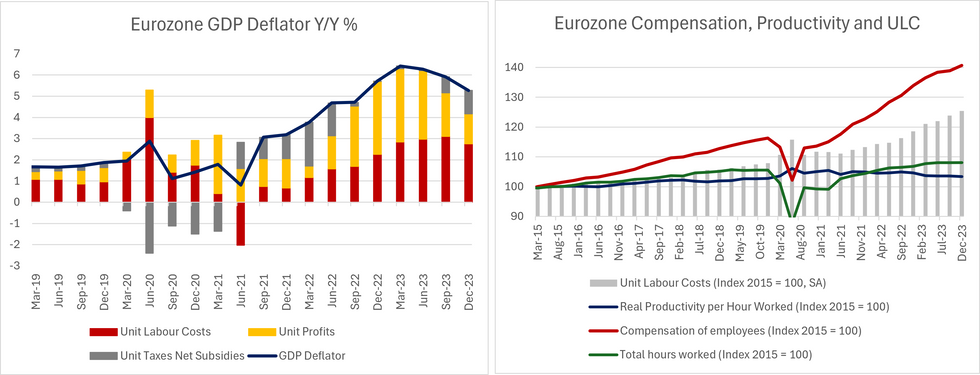-
Policy
Policy
Exclusive interviews with leading policymakers that convey the true policy message that impacts markets.
LATEST FROM POLICY: -
EM Policy
EM Policy
Exclusive interviews with leading policymakers that convey the true policy message that impacts markets.
LATEST FROM EM POLICY: -
G10 Markets
G10 Markets
Real-time insight on key fixed income and fx markets.
Launch MNI PodcastsFixed IncomeFI Markets AnalysisCentral Bank PreviewsFI PiFixed Income Technical AnalysisUS$ Credit Supply PipelineGilt Week AheadGlobal IssuanceEurozoneUKUSDeep DiveGlobal Issuance CalendarsEZ/UK Bond Auction CalendarEZ/UK T-bill Auction CalendarUS Treasury Auction CalendarPolitical RiskMNI Political Risk AnalysisMNI Political Risk - US Daily BriefMNI Political Risk - The week AheadElection Previews -
Emerging Markets
Emerging Markets
Real-time insight of emerging markets in CEMEA, Asia and LatAm region
-
Commodities
-
Credit
Credit
Real time insight of credit markets
-
Data
-
Global Macro
Global Macro
Actionable insight on monetary policy, balance sheet and inflation with focus on global issuance. Analysis on key political risk impacting the global markets.
Global MacroDM Central Bank PreviewsDM Central Bank ReviewsEM Central Bank PreviewsEM Central Bank ReviewsBalance Sheet AnalysisData AnalysisEurozone DataUK DataUS DataAPAC DataInflation InsightEmployment InsightGlobal IssuanceEurozoneUKUSDeep DiveGlobal Issuance Calendars EZ/UK Bond Auction Calendar EZ/UK T-bill Auction Calendar US Treasury Auction Calendar Global Macro Weekly -
About Us
To read the full story
Sign up now for free trial access to this content.
Please enter your details below.
Why MNI
MNI is the leading provider
of intelligence and analysis on the Global Fixed Income, Foreign Exchange and Energy markets. We use an innovative combination of real-time analysis, deep fundamental research and journalism to provide unique and actionable insights for traders and investors. Our "All signal, no noise" approach drives an intelligence service that is succinct and timely, which is highly regarded by our time constrained client base.Our Head Office is in London with offices in Chicago, Washington and Beijing, as well as an on the ground presence in other major financial centres across the world.
Real-time Actionable Insight
Get the latest on Central Bank Policy and FX & FI Markets to help inform both your strategic and tactical decision-making.
Free AccessQ4 Accounts Underscore Need For Q1 Data Before Easing Begins
The final Q4 national accounts confirmed a deceleration of the Eurozone GDP deflator to 5.3% Y/Y (vs 5.9% in Q3). Details suggest that unit profits buffered rises in unit labour costs (ULCs), consistent with the ECB's central projections in its updated forecasts.
- However, the Q4 readings of wage growth and productivity remain incompatible with the 2% HICP inflation target, underscoring the majority of the Governing Council's view that an analysis of Q1 2024 developments is required before starting the policy easing cycle.
- The ECB's March macroeconomic projections looked for a Q4 GDP deflator rise of 5.4% Y/Y.
- Of the 5.3% Y/Y rise in the GDP deflator, MNI's calculations suggest ULCs contributed 2.75pp (vs 3.11pp in Q3), while unit profits contributed 1.42pp (vs 2.04pp in Q3).
- ULCs rose 5.8% Y/Y in Q4 (vs 6.5% in Q3) and 1.3% Q/Q (vs 1.6% prior). The Y/Y rise was in line with the ECB's projections.
- The moderation in ULCs came after the growth in total compensation of employees fell to 5.0% Y/Y from 6.3%, while real productivity per hour worked (-1.2% Y/Y fall) and total hours worked (1.2% Y/Y rise) broadly offset each other.
- Total compensation per employee, which the ECB forecasts rather than total compensation overall, moderated to 4.6% Y/Y (vs a downwardly revised 5.1% prior). Yesterday's projections saw this at 4.8% Y/Y.
- As indicated in the preliminary national accounts last month, real productivity per employee was -1.1% Y/Y, below the March ECB forecast of -0.9% Y/Y.

To read the full story
Sign up now for free trial access to this content.
Please enter your details below.
Why MNI
MNI is the leading provider
of intelligence and analysis on the Global Fixed Income, Foreign Exchange and Energy markets. We use an innovative combination of real-time analysis, deep fundamental research and journalism to provide unique and actionable insights for traders and investors. Our "All signal, no noise" approach drives an intelligence service that is succinct and timely, which is highly regarded by our time constrained client base.Our Head Office is in London with offices in Chicago, Washington and Beijing, as well as an on the ground presence in other major financial centres across the world.
